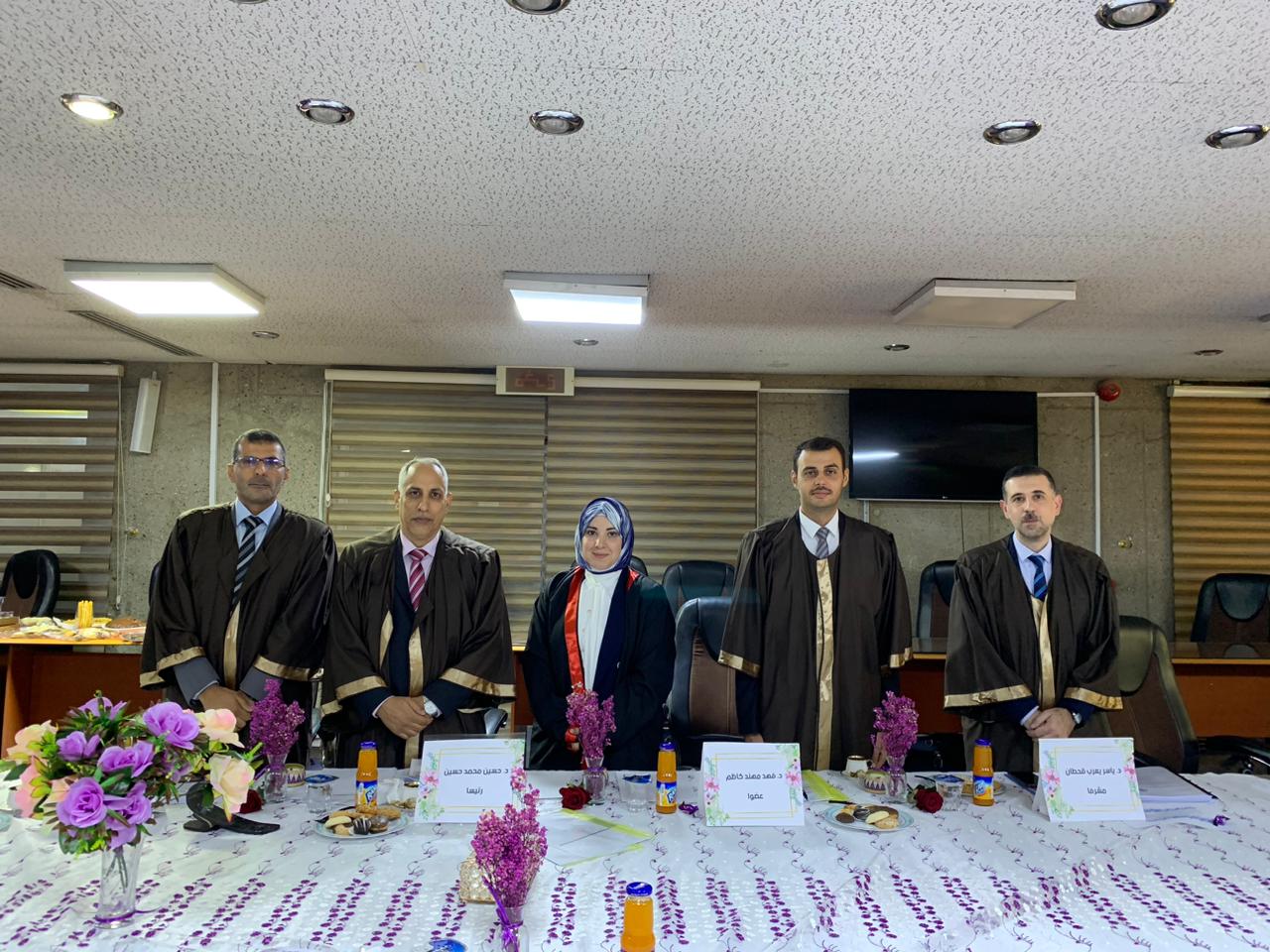Visitors: 20546973 Views
Done By: Department of Prosthetics and Orthotics Engineering
Post Date: 2023-09-18
Last Browse: 2025-04-06

Master's student Noor Basim Muhammed - Prothesis and
Orthosis Engineering Department her thesis tagged:
Numerical and Experimental
Investigation of Energy Storing and Release Foot Prothesis for Walking
The discussion took place on Munday 18/9/2023 in Al-Furat. The discussion
committee was chaired by Assist. Prof. Dr. Hussein Muhammed Hussein / University
of Technology and the membership of all Assist. Prof. Dr. Ahmed Riadh / Al-Nahrain
University and Assist. Prof. Dr. Fahad Muhanned/ Al-Nahrain University. The
thesis was conducted under the supervision of Assist. Prof. Dr. Yaser Yarub Qahtan
/ College of Engineering/ Al-Nahrain University.
Prostheses are devices that replace parts of the body
lost due to accidents, with the foot being the most important component. A
literature review of energy-storing prosthetic feet was conducted and compared
using a database. 40 research papers related to energy storage feet were
selected from 2001 to 2022 on the basis of the research’s name, author, year of
publication, research objective, materials used in manufacturing feet, methods,
and the final conclusion. This study facilitates and shortens the long search
path. This thesis attempted to develop an energy storage foot made of ABS-plus
material. Two methods were used: changing the type of material to better
mechanical properties, and changing the foot design. The results showed that
changing the design was the most important factor in the success of the foot
model. The heel strike test for the latest design F showed the best results,
with a total deformation of 4.7254 mm, a strain energy of 0.1863 mJ, a safety
factor of 1.584, a von Misses stress of 19.57 MPa, and a safety factor of
1.584. The dynamic analysis showed that the foot's ability to bear the weight
of the patient and all kinds of stress was unsatisfactory, with the safety
factor ranging from 1.0368 e-7 to 8.9274 e-8. This study aimed to design and
create a carbon fiber prosthetic foot. It was designed using the Solid Work
program, and numerical analysis was carried out using the Ansys program. The
results showed that the foot was safe in static, with an increase in the total
deformation and strain energy. In dynamic, the foot was safe when subjected to
repeated stress, and the safety factor was ranged from 15 to 4.95. The range of
motion showed values close to normal, providing a good gait for the amputee.
The practical test of the load deflection showed that the total deformation
values were close to the theoretical values. In the future, the work aims to
test the foot on different types of amputees, compare the results, and study
the strength and age of the foot and its effect on the gait cycle. Gait
analysis has been used to determine gait phase, kinematic and kinetic
parameters, and quantitative assessment of musculoskeletal function. This study
used three devices from BTS BIOENGINEERING to compare the effect of two
prosthetic feet, one manufactured in this study, and the other previously worn
by the patient. The results showed that the new artificial foot with an energy
of 6.186 joules showed a great improvement in the results of the tests compared
to the old artificial foot with an energy of 3.403 joules. The amputee's
opinions about the evaluation of the new prosthetic foot were good when using
the T-score by 61.0 with a rate of 86.4%.
The thesis was accepted as it fulfilled the requirements for obtaining a master's degree, with a Very Good grade.